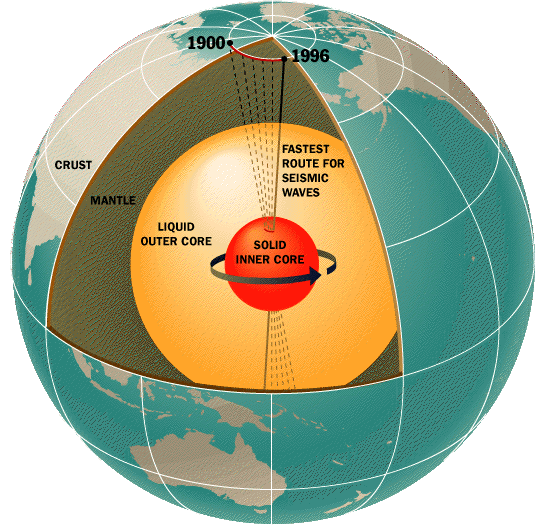
It’s easy to measure the magnetic field on the surface of the Earth, but not so easy to do so deep in Earth’s interior. In fact, until now, that’s never been done. Bruce Buffett and his team from UC Berkeley used distant quasars to work out the strength of the magnetic field 1800 miles underground.
To find the field strength, Buffett relied on the fact that the moon’s tug makes the axis of the solid inner core of the Earth precess, or spin slowly in the opposite direction to that of the moon. The magnetic field of the fluid outer core damps the affect on the inner core. The distant quasars provide a measuring stick to see how much the axis of spin is offset.
The magnetic field strength has repercussions for conditions inside the Earth’s core. In addition to the residual heat left over from the formation of the Earth, more heat is generated inside the Earth by convection currents as heavier elements sink, or by radioactive decay. The higher the magnetic field, the greater the contribution of radioactive decay to the total heat budget of the planet.
It turns out that the interior of the Earth has a magnetic field strength of 25 Gauss. To put that in perspective, the magnetic field strength on the surface of the Earth is only about 0.5 Gauss. 25 Gauss is actually right in the middle of the range of values geophysicists had predicted. This means that about 60% of the power generated at the core comes from convection.
No comments:
Post a Comment